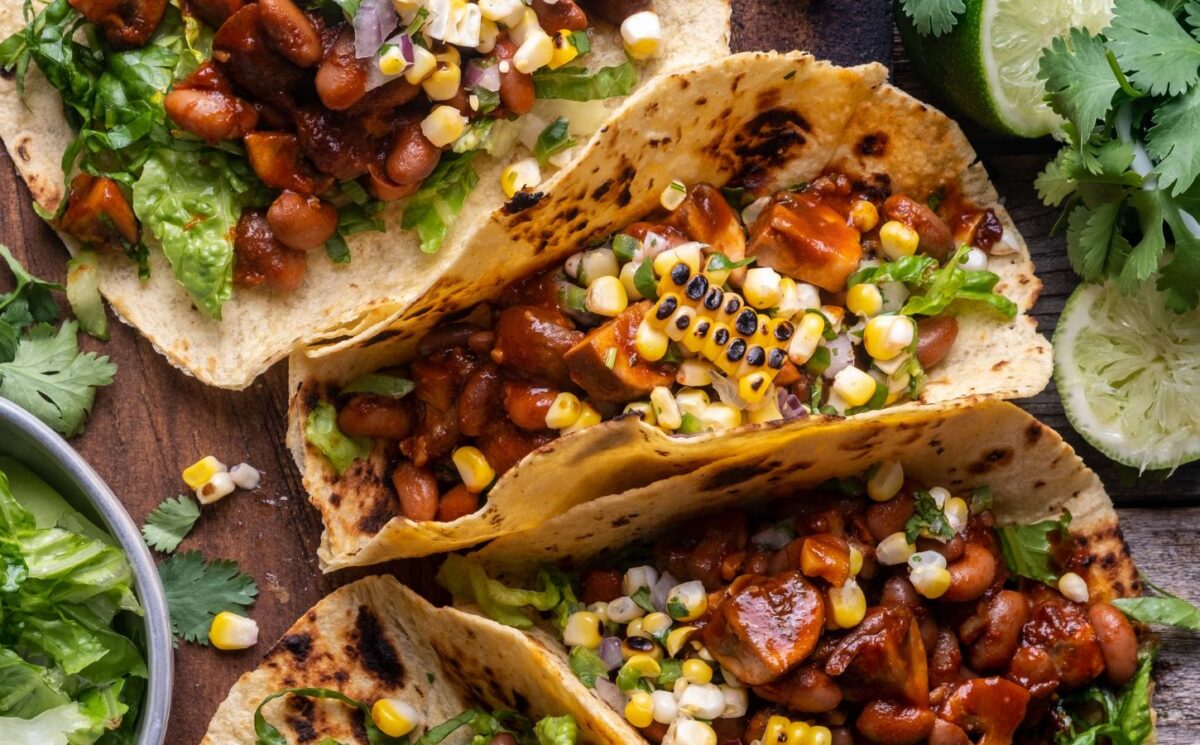精製された炭水化物はインスリンの急増に関連しており、糖尿病の原因の 1 つであると人々は信じています。その人たちは正しいです。しかし、それらは間違っています。
ミロス ポキミカ
によって書かれた: ミロス ポキミカ
医学的に検証した結果 Xiùying Wáng, M.D. 博士。
Updated 6月 9, 2023ほとんどの人は、白米のような精製された炭水化物はひどいものであり、精製された炭水化物はインスリンのスパイクに関連しており、糖尿病の原因の1つであると信じています。その人たちは正しいです。
しかし、それらは同時に間違っています。精製炭水化物と糖尿病の全体像を見ていかなければなりません。
米や穀物を精製すると、ぬかが除去されます。消費者は、繊維が歯の間にくっついて不味くなる、柔らかくて美味しいパンや米を好みます。しかし、食物繊維は消化を遅らせ、水を吸収するため、食物繊維のない米の炭水化物はより急速に吸収され、不自然なインスリンスパイクを引き起こし、私たちの体内で不自然な反応を引き起こします。この反応は、インスリン受容体のダウンレギュレーションによって代償として適応します。これはインスリン抵抗性を引き起こしており、糖尿病患者が食事から排除しなければならない多くの要因の 1 つです。
別の要因は、インスリン受容体のシグナル伝達をブロックする細胞間脂肪です。それで 精製された炭水化物と砂糖 大量かつ不自然な量のカロリーを迅速に消化します。私たちは糖の吸収が速いので、血流中のカロリーが多すぎるため、すべてのカロリーが消費されず、一部は脂肪として蓄積されてしまいます。さらに悪いことに、消化が終わり、糖分がすべて血中から排出されるとすぐに、私たちは再び空腹感を感じ始めます。したがって、繊維の欠乏は、肥満とインスリン受容体のダウンレギュレーションを引き起こす継続的な過食と相関しています。そして、肥満が独立して、以前にすでに書いたすべての悪いことを引き起こし、ループは終了します。歯にふすまがくっつくのは嫌だというような、たった 1 つの小さな介入が、連鎖的な影響を引き起こす可能性があります。医学界の大部分は、炭水化物がすべての悪と今日私たちが抱えているすべての病気の原因であることを認識しています。これは、パレオダイエットやアトキンスダイエットなどのダイエット法の根拠となります。ここには悪いロジックはありません。ここのところ。
業界はプロテインパウダーやサプリメント、そして特に赤身の肉であれば、あらゆる肉を販売することができます。古き良き鶏の胸肉や、マグロのような健康的な脂肪を含むものもあります。糖尿病患者の多くがこのような食事をとり始めると、症状が悪化する可能性があります。たとえば、中国と日本における現代の糖尿病の蔓延は白米の消費と関連しているが、これも半分真実である。したがって、それが『中国研究』が人々を苛立たせる理由である。
現在、米は世界人口のほぼ半数を養っていますが、人々がさらに多くの米を食べていたほんの数十年前よりも糖尿病率を大幅に下げるにはどうすればよいでしょうか? この研究では、たとえば (胡他、2012特にアジア人(中国人と日本人)では、白米の消費量が多いほど2型糖尿病の可能性が有意に高くなる。また、この研究は352,384人が参加し、追跡期間は4年から22年であり、決して小規模なものではない。総人口数で統計的に分析すると、1日1食の白米摂取が増えるごとに、2型糖尿病の相対リスクは1.11、つまり11%増加することが用量反応メタアナリシスで示された。現在、中国は肥満が7倍も少ないにもかかわらず、糖尿病罹患率は10%前後で、11%前後のアメリカと同じである。白米は肥満や心筋梗塞、脳卒中とは関係なく、糖尿病と関係しているようだ。.
しかし、もう一度中国研究を見ると、米を中心とした田舎の植物ベースの食事は、糖尿病、がん、心臓病のリスクが低いと関連していました。糖尿病有病率のこの 10% は、たまたま起こったことです。2000 年、中国は世界で最も糖尿病率が低い国の 1 つでした。これはわずか 20 年の間に起こった劇的な変化です。
どうしたの?
まあ、生活水準が上がると、どの国でも同じことが起こります。 肉の消費量は40%も増加し、米の消費量は30%減少した。そして今、問題が発生しています。 肉の消費量が増加し、米の消費量が減少し、糖尿病のリスクが上昇し、同時に米の摂取量単独が糖尿病のリスクと相関している場合、何が起こっているのでしょうか? お米だけですか?
もっと古風な食生活をして、米を全部減らすべきでしょうか?それが彼らが私たちに言うことです。精製された炭水化物は糖尿病や肥満と相関しています。答えは簡単です。何が起こるかというと、動物性たんぱく質が米をさらに悪くしているのです。これはぜひ読んでいただきたい研究の 1 つです (ガリフォードら、1989)。発行日は1989年10月です。
まさに「新しい」医療の進歩です。6人の非インスリン依存性糖尿病被験者は、ジャガイモまたはスパゲッティのいずれかとして炭水化物25gを含む食事を摂取していた。それは白米と同じ食事です。真っ白な小麦粉パスタとでんぷんたっぷりの低繊維ポテト。次に、インスリン反応を測定し、25 g のタンパク質を追加した食事と 25 g の脂肪を含むもう 1 回の食事を繰り返しました。血液中の糖レベルとインスリン反応を、試験食後 4 時間測定しました。タンパク質を添加すると、インスリン反応が劇的に増加しました。これは、誰かに砂糖とタンパク質を与え、インスリン反応を測定する「最先端の」科学です。
そうです。答え。それは栄養の聖杯です。
プロテイン。
グラフを見ると、タンパク質を添加するとジャガイモの状態がちょうど 2 倍悪化することがわかります。150から300まで。
砂糖水でもできますよ。50から100へ。肉を追加すればするほど、品質は悪化します。タンパク質が50gに達すると、非常に不自然で病気の原因となるインスリンの急増が引き起こされます。動物性タンパク質は、炭水化物の摂取によって引き起こされるインスリン分泌を大幅に増強します。 そして私たちはずっと、糖尿病の原因は白米と白い小麦粉と砂糖だと言われてきました。そしてそれは部分的には正しいです。本当の真実はもっと複雑です。 糖尿病の主な原因は、新しい食事への不適応です。
繊維は全粒小麦パスタと同様にインスリン反応を低下させますが、100パーセントのレベルではありません。でんぷんに肉を加えるのは問題がある。この組み合わせは不自然です。ローストした鶏の胸肉を全粒粉のパンと一緒に食べるのは、油の有無にかかわらず、通常の白い小麦粉のようなポモドーロパスタを同じ量食べるよりも、インスリン反応がはるかに悪く、ほぼ2倍悪くなります。
このように考えてみてください。 他の動物で、さまざまな食べ物で構成される定期的な昼食をとっている動物はいますか?
肉食動物は肉だけを食べます。プラントイーターは植物だけを食べます。雑食動物はどうですか? 熊が魚を釣って、昼食の時間までしばらく食べないで、その魚を蜂の巣に持って行ってデザートを食べるとでも思っているのだろうか?
同じ食事で異なる食品を組み合わせるのは100%不自然であり、現代人の発明です。. そして、このインスリンの急増は不適応です.
私はこう尋ねます。パンなしで肉だけ食べてもいいですか?脂っこいソーセージをそのまま食べてみませんか?バンズを使わずにハンバーガーの肉だけを楽しみますか?これは脂肪と炭水化物(砂糖)の混合物で、脳内のドーパミンシグナル伝達や、この場合の異常なインスリン反応など、他の多くのことを異常に引き起こします。これと繊維摂取量の少なさが組み合わさると、悲惨な結果を招くことになります。さまざまな食品を組み合わせるのは自然な食事の形ではありませんが、楽しいものなので、できる限り最善の方法で対処する必要があります。
2 型糖尿病はある程度まで治療可能です。実際はとてもシンプルです。運動と減量を考慮すると、動物性タンパク質を摂取しないことが第一になります。2番目は食物繊維です。それは毎食にたくさん含まれることを意味します。肉を食べなければならず、他に選択肢がない場合は、思い切って肉を食べてください。ただの肉。パン、ご飯、砂糖は一切入れません。砂糖とは、通常の砂糖、フルクトース、またはあらゆる形態の炭水化物を意味します。サラダも何もありません。たぶんチーズかな。牛乳はありません。牛乳には砂糖や乳糖が含まれています。
糖分とタンパク質を組み合わせて摂取する必要がある場合は、オオバコの殻や通常の小麦ふすまを加えて、食後にスプーンで食べると良いでしょう。そうするとある程度消化が遅くなります。オオバコハスクにはカロリーがありません。100パーセント繊維です。お腹の中で食事をかさばって飽和感を高めたい場合は、ダイエットに使用できますが、液体の段ボールのような味がします。
3番目はレジスタントスターチ、つまり豆です。家族に糖尿病がいる場合、大量のパンと大量のアルコールと一緒にソーセージを食べれば、おそらく対処は完了します。10人に1人が糖尿病であるという数字を見ると、それは控えめな表現です。実際の数は先進国では3人に1人です。彼らは目に見える症状がなく、インスリン抵抗性が前糖尿病として知られる範囲内にあるため、そのことに気づいていないだけかもしれません。前糖尿病はそれ自体が病気であり、長期的には何らかの悪影響も引き起こす可能性があります。10人に1人の割合で本格的な糖尿病にエスカレートします。CDC は、世界の未開発地域の工業化が進むにつれて、これらの数字は主に世界規模で今後も増加すると推定しています。前糖尿病がある場合、特に心臓、血管、
参考文献:
- ヒュー、EA、パン、A.、マリク、V.、サン、Q. (2012)。白米の摂取と2型糖尿病のリスク:メタアナリシスと系統的レビュー。 BMJ(臨床研究編), 344、e1454。 https://doi.org/10.1136/bmj.e1454
- MC ガリフォード、EJ ビックネル、JH スカルペロ (1989 年)。インスリン非依存性糖尿病被験者における高血糖指数炭水化物と低血糖指数炭水化物に対する血糖反応に対するタンパク質と脂肪の摂取の異なる影響。 アメリカの臨床栄養学雑誌, 50(4)、773–777。 https://doi.org/10.1093/ajcn/50.4.773
栄養と健康について何か質問はありますか?
ぜひご意見をいただき、次回の投稿でお答えしたいと思います。皆様のご意見とご意見に感謝しており、すぐにご連絡をお待ちしております。私もあなたを招待します フォローする Facebook、Instagram、Pinterestでダイエット、栄養、健康に関するコンテンツをご覧ください。そこにコメントを残して、他の健康愛好家とつながり、あなたのヒントや経験を共有し、私たちのチームやコミュニティからサポートや励ましを得ることができます。
この投稿があなたにとって有益で楽しいものであり、学んだ洞察を生かす準備ができていることを願っている。この投稿が役に立ったと思われた方は シェアする 友人や家族など、その恩恵にあずかれるかもしれない人たちと一緒に。誰が健康の旅にガイダンスやサポートを必要としているかわからないのですから。
– あなたはおそらくそれも好きでしょう –

栄養について学ぶ
ミロス・ポキミカは、自然医学の医師、臨床栄養士、医療健康と栄養のライター、栄養科学アドバイザーです。書籍シリーズの著者 ビーガンに行きますか?科学の復習また、自然健康サイト「GoVeganWay.com」を運営している。
医療上の免責事項
GoVeganWay.com では、最新の栄養と健康関連の研究のレビューをお届けします。提供される情報は著者の個人的な意見を表すものであり、専門的な医学的アドバイス、診断、または治療に代わることを意図または暗示するものではありません。提供される情報は情報提供のみを目的としており、資格のある医師または医療提供者の相談、診断、および/または治療に代わるものとして機能することを意図したものではありません。GoVeganWay.com で読んだことや GoVeganWay.com を通じてアクセスしたことを理由に、専門家の医学的アドバイスを無視したり、医療治療を受けるのを遅らせたりしないでください。
認可された医師に相談する前に、GoVeganWay.com で読んだ内容の結果としてライフスタイルの変更や変更を決して適用しないでください。
医療上の緊急事態が発生した場合は、直ちに医師または 911 に電話してください。GoVeganWay.com は、内部で言及されている特定のグループ、組織、検査、医師、製品、手順、意見、またはその他の情報を推奨または承認しません。
編集者のおすすめ –
ミロス・ポキミカは、自然医学の医師、臨床栄養士、医療健康と栄養のライター、栄養科学アドバイザーです。書籍シリーズの著者 ビーガンに行きますか?科学の復習また、自然健康サイト「GoVeganWay.com」を運営している。
最新記事 -
プラントベースのニュース
-
Vegan Christmas Day 6: Mushroom and Pumpkin Wellington
on 12月 6, 2025
-
20 Of The Very Best Recipes For Veganuary 2026
on 12月 6, 2025
-
Vegan Football Star Karen Carney To Enter Quarter Finals Of Strictly Come Dancing
on 12月 6, 2025
-
Vegan Christmas Day 5: Stuffed Roasted Joint
on 12月 5, 2025
-
‘Vegan McDonald’s’ Mr Charlie’s To Open Two New San Diego Locations
on 12月 5, 2025
-
Vegan Christmas Day 4: Pesto Puff Pastry Trees
on 12月 4, 2025
-
From Side Dish to Superfood: White Potatoes Are Making a Comeback
on 12月 4, 2025
トップヘルスニュース — ScienceDaily
- The rotten egg smell that could finally beat nail funguson 12月 7, 2025
Researchers have identified hydrogen sulfide as a surprisingly effective tool for treating difficult nail infections. It penetrates nails more efficiently than current drugs and kills pathogens by disrupting their energy systems. The compound also works against fungi that resist standard antifungal treatments.
- Natural hormone unlocks a hidden fat burning switchon 12月 6, 2025
FGF19 triggers the brain to burn more energy and activate fat-burning cells, offering a potential new path for obesity treatments. The hormone enhances thermogenesis and reduces inflammation, but only when the sympathetic nervous system is active. Researchers uncovered how cold exposure increases receptor expression for FGF19 in the hypothalamus, hinting at an evolutionary role in temperature regulation. Ongoing work aims to discover how to boost natural production of this powerful metabolic […]
- Scientists find hidden layers in brain’s memory centeron 12月 6, 2025
Scientists uncovered a surprising four-layer structure hidden inside the hippocampal CA1 region, one of the brain’s major centers for memory, navigation, and emotion. Using advanced RNA imaging techniques, the team mapped more than 330,000 genetic signals from tens of thousands of neurons, revealing crisp, shifting bands of cell types that run along the length of the hippocampus. This layered organization may help explain why different parts of CA1 support different behaviors and why certain […]
- Next gen cancer drug shows surprising anti aging poweron 12月 5, 2025
A next-generation drug tested in yeast was found to extend lifespan and slow aging by influencing a major growth-control pathway. Researchers also uncovered an unexpected role for agmatinases, enzymes that help keep this pathway in balance. Diet and gut microbes may affect aging more than expected because they produce the metabolites involved.
- Scientists reveal a powerful heart boost hidden in everyday foodson 12月 5, 2025
Regular consumption of polyphenol-rich foods like tea, coffee, berries, nuts, and whole grains may significantly support long-term heart health. A decade-long study of more than 3,100 adults found that those who consistently ate polyphenol-packed diets had healthier blood pressure and cholesterol levels, as well as lower predicted cardiovascular risk.
- Alzheimer’s blood tests may be misleading for people with kidney problemson 12月 5, 2025
A large study found that people with impaired kidneys tend to have higher Alzheimer’s biomarkers, yet they don’t face a higher overall risk of dementia. For those who already have elevated biomarkers, kidney problems may speed up when symptoms appear. The findings show that kidney health can change how Alzheimer’s blood tests are read. Doctors may need to consider both organs to get a clearer picture.
- Experimental RNA treatment shows surprising DNA repair poweron 12月 5, 2025
Cedars-Sinai scientists have created a new experimental drug called TY1 that helps the body repair damaged DNA and restore injured tissue. The discovery came from studying tiny molecular messages released by heart cells that naturally support healing after injury. By identifying and recreating the most powerful of these messages, the team developed a synthetic RNA molecule that boosts the body’s DNA-repair system, reduces scarring, and may improve recovery after heart attacks and other […]
パブメッド、 #ビーガンダイエット –
- Plant-based dietary index on the Mediterranean and a vegan diet: a secondary analysis of a randomized, cross-over trialon 12月 5, 2025
CONCLUSION: These findings suggest that, replacing animal products even with the “unhealthful” plant-based foods on a vegan diet was associated with weight loss.
- A vegan diet signature from a multi-omics study on different European populations is related to favorable metabolic outcomeson 12月 4, 2025
Vegan and omnivorous diets differ markedly in composition, but their effects on the gut microbiome, metabolome, and lipidome across populations remain insufficiently characterized. While both diet and country of origin influence these molecular layers, the relative contribution of diet versus country-specific factors has not yet been systematically evaluated within a multi-omics framework.In this cross-sectional, bicentric, observational study, we profiled healthy vegans (n = 100) and […]
- The VEGPREV study: effectiveness of four plant-based diets on weight loss, metabolic syndrome components and appetitive traits in overweight and obese individuals: a randomized controlled trialon 12月 4, 2025
CONCLUSION: Among plant-based dietary patterns differing in animal product content, the EAT and VG diets demonstrated the most pronounced effects on weight and body composition. These findings provide support for the notion that structured, plant-based dietary interventions can be effective strategies for managing body weight.
- Prevalence, motivations, lifestyle preferences, and basic health behavior among 1,350 vegan, vegetarian, and omnivorous Austrian school teachers and principalson 12月 4, 2025
CONCLUSION: This is the first study to investigate the potential differences in basic health behavior among refined dietary subgroups (omnivorous, ovo-lacto-vegetarian, and vegan) in school teachers and principals. The findings indicate that basic diet type differentiation is the first step towards fundamentally healthy behavior, however, further action must be taken to achieve better health among school teachers and principals in Austria (more physical activity, sports and exercise, and […]
- Appropriate Intervention Diets to Manage Type 2 Diabetes Mellitus Among Adults in Australia: A Systematic Reviewon 12月 3, 2025
Type 2 diabetes mellitus (T2DM) is a chronic metabolic disorder characterised by insulin resistance and hyperglycaemia, contributing to significant morbidity and mortality worldwide, including in Australia. This systematic review aimed to explore the most appropriate dietary interventions for managing T2DM among Australian adults. Following the Preferred Reporting Items for Systematic Reviews and Meta-Analyses (PRISMA) guidelines, databases including PubMed, Medline, Embase, and Google […]
ランダムな投稿 –
おすすめの投稿 -

PubMed の最新情報、 #植物ベースの食事 –
- Review: European consumers’ attitudes towards the benefits of reducing meat consumption – the role of diverse and interconnected driversby C van der Sluis on 12月 6, 2025
High red meat and processed meat consumption may be associated with some human health problems (such as type 2 diabetes, weight gain, and higher overall mortality), environmental problems (such as climate change, water pollution and biodiversity loss), and ethical concerns. Reducing red and processed meat consumption and shifting towards (more) plant-based diets are proposed to benefit public and environmental health, as well as create a more equitable food system for humans and farm animals….
- Micronutrient bioavailability: concepts, influencing factors, and strategies for improvementby James D Richards on 12月 5, 2025
The human diet provides a range of macronutrients and micronutrients, which are metabolized for energy and used to support all aspects of life. The extent to which these nutrients are absorbed in a form that can be used by metabolic processes, or stored for later use, is termed bioavailability. Certain dietary factors increase the bioavailability of micronutrients: bioavailability can be enhanced by different vitamin forms (e.g., calcifediol is more bioavailable than cholecalciferol;…
- Plant-based dietary index on the Mediterranean and a vegan diet: a secondary analysis of a randomized, cross-over trialby Hana Kahleova on 12月 5, 2025
CONCLUSION: These findings suggest that, replacing animal products even with the “unhealthful” plant-based foods on a vegan diet was associated with weight loss.
- Exploring the seasonal dietary practice of consuming 101 leafy vegetables during the Assamese festival of Bohag Bihu: a study of traditional heritage and ethnomedicinal perception in Assamby Koushik Nandan Dutta on 12月 5, 2025
CONCLUSION: This study documents the Assamese folk practice of consuming 101 leafy vegetables for their purported pharmacological activity. While scientifically validating the identity and beneficial effects of these plants; this study also highlights the spirituality, cultural oikos and rich ethnic identity of the Assamese community.
- Exploring eight-year trajectories of diet-related environmental pressures in the NutriNet-Sante cohortby Elie Perraud on 12月 5, 2025
Few studies have explored individual diet-related environmental pressure changes, beyond greenhouse gas emissions (GHGe) and land occupation (LO). This study evaluates the trajectories in several environmental impacts of diets among 8,905 French adults from the NutriNet-Santé cohort, who completed food frequency questionnaires (distinguishing organic vs. conventional foods) in 2014, 2018, and 2022. Six environmental indicators-GHGe, LO, energy demand, ecological infrastructure use, water […]
- A vegan diet signature from a multi-omics study on different European populations is related to favorable metabolic outcomesby Anna Ouradova on 12月 4, 2025
Vegan and omnivorous diets differ markedly in composition, but their effects on the gut microbiome, metabolome, and lipidome across populations remain insufficiently characterized. While both diet and country of origin influence these molecular layers, the relative contribution of diet versus country-specific factors has not yet been systematically evaluated within a multi-omics framework.In this cross-sectional, bicentric, observational study, we profiled healthy vegans (n = 100) and […]



































